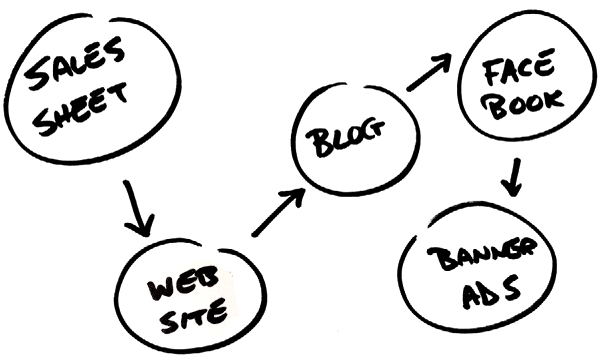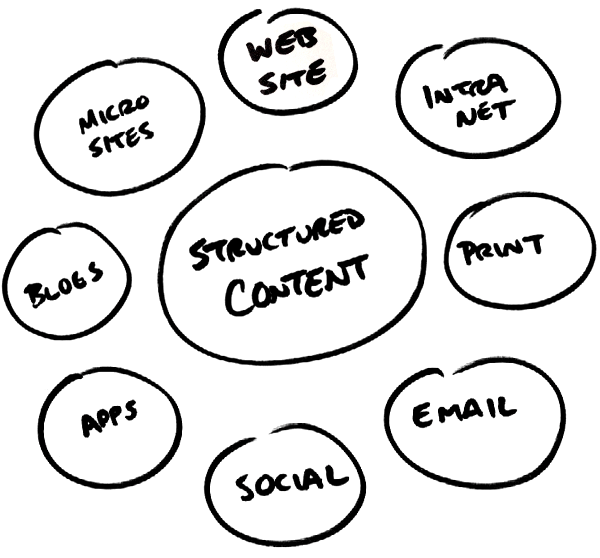Keeping “content first” is no longer the hot topic of the web industry. “Content is king” — so 2011. It’s now assumed, if you work in web creation, that you get this concept and accept it as web doctrine. The discussion among content strategists (and webbies in general) has now shifted toward the methods, context, and channels for distributing said content. This conversation has never been more concentrated than it was in Minneapolis recently at Confab 2012, the only conference with the clout to call itself “the content strategy conference.”
In my time at Confab 2012, the most recurring topics revolved around terms such as structured content, flexible content, adaptive content, and so on. Familiar phrases — we’ve been reading articles and discussing the topic at Sparkbox over the course of the past year; however, I was interested in hearing views on the implementation of these difficult and abstract concepts from some industry juggernauts. Karen McGrane, Erin Kissane, and Cleve Gibbon all spoke on the subject, while many others touched on it, and this wrapup borrows heavily from their genius.
Structured Content
Before I get into the discussion of implementation, however, let me give you an overview of the concept as I understand it — which means it will be simple, because I’m a simple guy. This is relevant to clients, because you’ll soon be faced with budgetary decisions on whether or not to pull the trigger. It’s also relevant to web professionals, because if you aren’t already beginning to think this way, you’ll soon have to. It’ll eventually become best practice.
Essentially, the days of pushing content from one channel to another are coming to an end. Writing content for your printed pamphlet, then editing that content and adding it to your website, then editing it again and adding it to your blog, then editing it again and adding it to your Facebook page is the way of the past.

The days of channel-agnostic structured content are emerging. To be fair, this approach has been maturing for awhile in enterprise-level information systems. However, this concept is becoming more relevant now to the masses because mid-sized businesses — even small businesses — are becoming more savvy about how content can turn into dollars.
So what is structured content? To be honest, I’m still not satisfied with my own knowledge of this, but the basic gist is that content follows object-oriented models familiar to software programming. In other words, you break content free from a channel, then store and categorize it in a semantic way so that it can be used in a variety of media. In even more blunt terms, we stop writing content for web pages and start writing content that can be consumed in a variety of ways, “packages of ideas” as Erin Kissane called them in Minneapolis.

A True CMS
Current web content management systems weren’t designed with this in mind. Wordpress and Expression Engine and (insert favorite CMS here) are fantastic pieces of software, but they were originally created with a more narrow purpose in mind — building websites. Although websites are undeniably an important part of an organization’s content universe, they aren’t the end-all-be-all.
Traditional publishing and content management systems bind content to display and delivery mechanisms, which forces a recycling approach for multi-platform publishing.
A semantic content publishing system, on the other hand, creates well-defined chunks of content that can be combined in whatever way is most appropriate for a particular platform. Applications do the combining of chunks based on their understanding of a universal content structure. All display and workflow issues are addressed by delivery applications, rather than by a content management system earlier in the process.
– Dan Willis, UX Crank
What I’m talking about is a system that manages content for all possible communication channels including creation, editing, curation, promotion, workflows, cross-organization users, etc. Essentially, something that is made possible by a system such as this:

This is a true content management system, not just a website content management system.
These things do exist. As I mentioned before, enterprises have had similar information systems for more than a decade. Historically, however, these systems are custom built solutions (or using something like a Microsoft SharePoint). As this topic was being discussed at Confab this year, custom systems were being featured as examples from organizations such as NPR and Skype — not small operations. The cost for custom systems such as these is high, and it requires an organization to have a fairly mature internal culture of content strategy to justify the expense. This is why, as you can imagine, this is a new venture for small and mid-sized businesses which actually make up a greater part of the professional landscape.
However, small and mid-sized businesses are getting wise to the value of content. They’re learning from larger, successful businesses:
Unstructured content is stupid and old-fashioned. It’s costly, complex and does not generate a competitive advantage.
– Ann Mulcahy, former CEO Xerox
Better Tools are Coming
As organizations get more content acute, client demand for structured content will grow, and I believe digital agencies will respond by developing platforms to accommodate. Content strategists are also finally getting into the game demanding better tools, though developers have been in the game for years, wishing content folks would provide clear, experienced direction on how to build said tools.
These conditions are creating a great environment for the innovation of the next generation of content management systems. I expect this generation will include flexible, extendable platforms which can be used as launching pads for agencies to create customized semantic content publishing systems for clients.
Until these tools are available (or until you help create them), organizations can take the first steps to get ready now. Begin to cultivate that internal culture of structured content and centralized content strategy. Find ways to push your organization in a direction that will allow you to make the leap easier later. Even current CMS systems can be extended to become something closer to what you’ll ultimately need long term.
There are still a lot of problems to be worked out. Though from my time at Confab, it does seem that the problem is finally being more clearly identified and all the necessary parties are pulling up to the table to develop better solutions.
Stay tuned and get involved!

